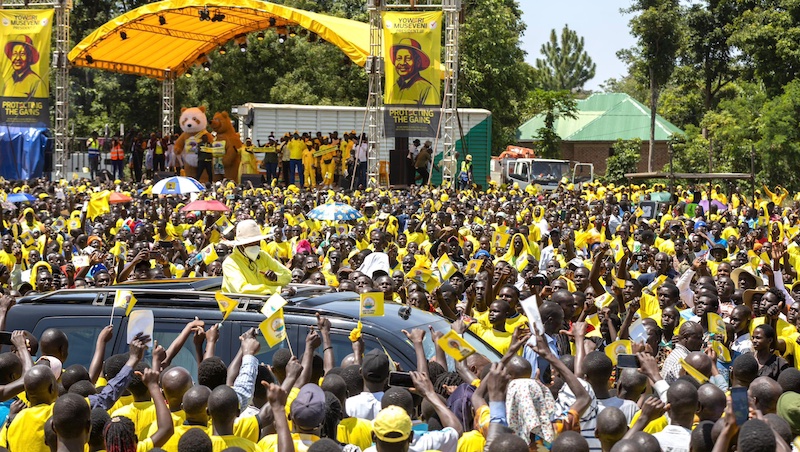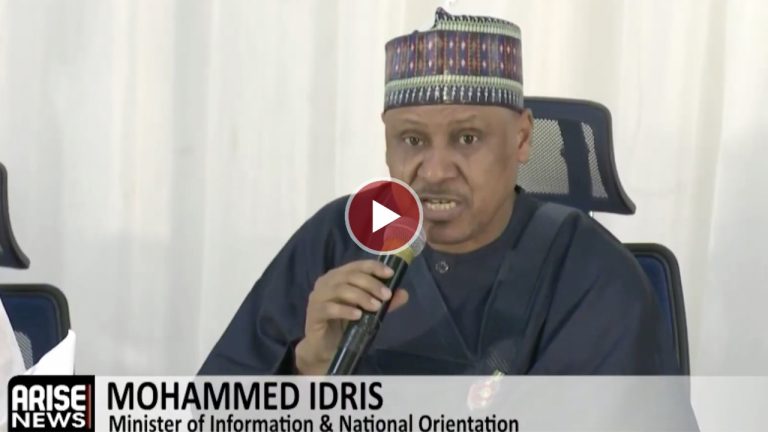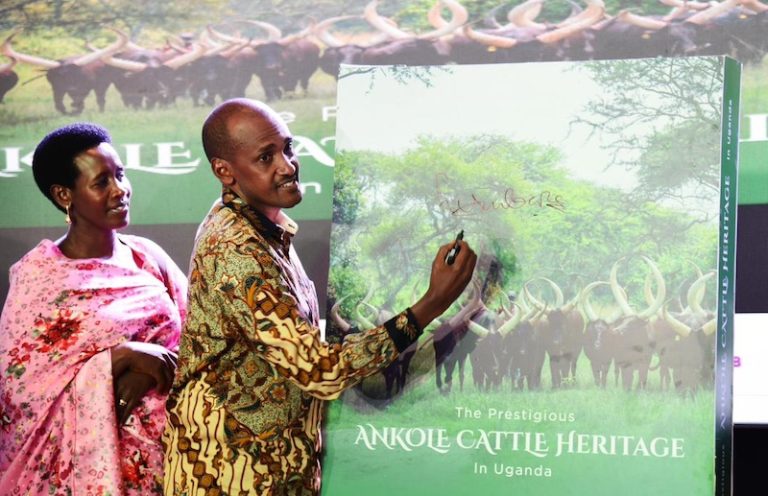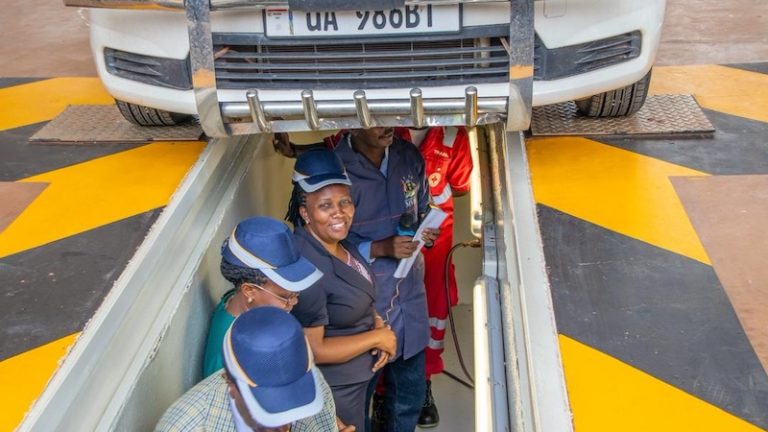
When President Yoweri Kaguta Museveni returned to Northern Uganda on his 2026 campaign trail, the familiar rhythm of the speeches was unmistakable.
Once again, he spoke of peace, unity, wealth creation, and the need to “consolidate the NRM achievements”. He promised cattle restocking in Acholi, wealth creation programmes in Lango, border trade and infrastructure in West Nile, and livelihood transformation in Karamoja and Teso.
Yet behind the applause and the bright yellow banners, many listeners in the North are haunted by a recurring question: why do the same promises return every election cycle, even after four decades of NRM rule? Museveni’s message in the North is anchored in the language of gratitude and continuity.
He often reminds his audience that “without peace, nothing else matters.” It is a compelling argument, especially for regions once scarred by insurgency, cattle rustling and underdevelopment.
For Acholi, he pledged renewed efforts to restock livestock lost during the war and to compensate families affected by the two-decade Lord’s Resistance Army (LRA) insurgency. In Lango, the president emphasized infrastructure, education reforms and commercial agriculture as the route out of poverty.
West Nile heard pledges of more electricity, roads and border trade zones — to make the region “a corridor of prosperity.” And in Karamoja and Teso, Museveni promised to continue his campaign against cattle rustling while expanding livelihood diversification programmes to transform a region long synonymous with insecurity and hunger.
Yet, these promises are not new. They echo those made under the Peace, Recovery and Development Plan, NUSAF (I-III), Operation Wealth Creation, and now the Parish Development Model (PDM) – programmes that have largely failed to close the gap between GDP growth and real household prosperity.
THE ILLUSION OF GROWTH
Uganda’s economy has grown steadily on paper, with GDP figures cited as evidence of progress. But as many economists note, that growth remains “jobless and rootless”!
Sofia Reynoso of the Bargen project, who specializes in business and new markets, observed that Uganda’s steady economic growth, driven by agriculture and services sectors, reflects its resilience amid global challenges.
Effective monetary policies have stabilized inflation, creating a favourable environment for recovery. External financial support and strategic investments in infrastructure and education aim to enhance Uganda’s economic stability and long-term growth prospects.
Addressing structural challenges and boosting productivity remain crucial for sustaining this progress. On the other hand, the Makerere University-based Economic Policy Research Center (EPRC), in a 2025 policy brief titled, ‘Building bridges: Aligning women investment and farmer realities under Uganda’s Parish Development Model’, captures the challenge of Uganda’s apparent growth.
The EPRC warns that over 40 per cent of PDM beneficiaries continue to switch from the intended enterprises, which is likely to impede success of the programme.
“Farmers have switched from high-value enterprises such as poultry, piggery and coffee to low-value enterprises due to long turnaround time, weather vagaries of pests and diseases and market constraints.”
The EPRC advises that to enhance PDM’s impacts, policy actions should focus on fostering fund disbursements, strengthening market access through cooperatives and storage facilities, expanding financial literacy and adopting gender-sensitive enterprises selection strategies that provide targeted financial and technical support.
The benefits of macroeconomic expansion have largely been captured by a narrow class of urban elites, bureaucrats and politically connected contractors — while the rural economy, particularly in Northern Uganda, stagnates under low productivity, poor access to finance, and inadequate social services.
“GDP growth looks good in Kampala, but it has not changed the life of the small farmer in Gulu, Lira or Yumbe,” says a youth cooperative leader in Kitgum.
“Every election, we are promised wealth creation. But wealth for who?” Afri Youth Network (Bididi/Yumbe), a refugee-led civil society organisation working with youth for self-reliance, mentorship and social economic activities, has also affirmed this position.
It said that in spite of participating with other youth in the coalition of youth on electoral democracy in submitting the National Youth Manifesto, not much has come of it. For example, the 2021-2026 NRM manifesto called for streamlining the active participation in contribution of youth to national development.
“But what has happened?” Juma John, a member of the organisation, asks. This disconnect between the numbers and lived reality lies at the heart of what Professor Yasin Olum famously termed “The Northern Question.”
THE NORTHERN QUESTION REVISITED
In his seminal political analysis, Professor Yasin Olum argued that the ‘Northern Question’ was not just a product of war or backwardness, but a result of structural exclusion embedded in Uganda’s political economy.
His central thesis was stark: “Power, resources and decision-making have long been concentrated in the central region, rendering the North politically peripheral and economically dependent”.
Olum’s view remains painfully relevant today. Despite national peace and the rhetoric of inclusion, the North continues to experience asymmetric development — where the state’s presence is most visible through military installations and political mobilization, but weakest in service delivery and economic empowerment.
Decades of promises — from restocking livestock to promoting commercial agriculture — have been undermined by elite capture, corruption and poor institutional accountability. In practice, development projects are implemented through patronage channels designed to reward loyalty rather than impact livelihoods.
This dynamic reinforces the very exclusion that Olum described as “a peripheral region politically courted but economically neglected”. Museveni’s long incumbency has institutionalized what scholars call a “political economy of survival”.
Here, development is not purely technocratic; it is transactional. Promises, projects and programmes are recycled as instruments of political control rather than long-term transformation. Each election cycle reactivates old pledges: compensation for war victims, completion of stalled roads, or restocking cattle.
The continuity narrative — that peace equals progress — becomes both the message and the shield against criticism. But for many in the North, the fatigue is visible. The peace dividend has been slow to convert into prosperity.
Youth unemployment is soaring; smallholder farmers struggle with drought and low market prices; and even new programmes such as the Parish Development Model risk being consumed by the same bureaucratic inefficiencies that plagued their predecessors.
A recent statement of the organization, Acholi War Debt Claimants captures this fatigue. It indicates that thousands of claimants are still waiting for lost livestock despite government efforts to disburse funds; while some claimants have been verified, a significant number have yet to receive any payment, and those who have been paid, often have received less than the estimated value of their animals.
Progress is slow due to issues such as limited budgets and bureaucratic hurdles like dormant bank accounts that lead to money bouncing. The persistence of Northern Uganda’s underdevelopment, despite decades of “targeted interventions,” suggests that the problem is not policy scarcity; it is scarcity of political will.
As Prof Olum noted, “Until power and decision-making are genuinely decentralized — and resource allocation made equitable — the North will remain a recipient of promises rather than an engine of national growth.”
In that sense, Museveni’s new campaign may be less about fresh ideas and more about managing political continuity. The challenge is whether Uganda can move from patronage politics to productive inclusion — from a politics of promises to a politics of performance.
FROM RHETORIC TO REALITY: WHAT THE NORTH DESERVES
A cross-section of the leadership encountered suggested that Northern Uganda no longer needs another manifesto. It needs a new social contract grounded in measurable outcomes, transparent budgets and community monitoring for all restocking and wealth programmes.
Notable is inclusive policy-making that empowers districts to plan and prioritize their development agendas and real investment in agribusiness, education and youth employment that can turn peace into prosperity.
Until then, the ‘Northern Question’ remains unanswered — not because of lack of awareness, but because the political economy that created it remains intact. The North has given the NRM time, trust and votes.
What it now demands is transformation, not talk.
Dr Tolit Charles Atiya is a policy analyst and development researcher focusing on governance, conflict transformation and rural inclusion in Uganda.



